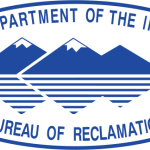- Industry: Government
- Number of terms: 15655
- Number of blossaries: 0
- Company Profile:
A U.S. Department of the Interior agency that oversees water resource management incuding the oversight and operation of numerous diversion, delivery, and storage projects the agency has built throughout the western United States for irrigation, water supply, and attendant hydroelectric power ...
Covered portion of spillway between the gate or crest structure and the terminal structure, where open channel flow and/or pressure flow conditions may exist. Portion of an outlet works between upstream and downstream portals, excluding the gate chamber. Tunnels are generally located in the dam abutments, and are concrete lined or concrete/steel lined. An enclosed channel that is constructed by excavating through natural ground. A tunnel can convey water or house conduits or pipes. A long underground excavation with two or more openings to the surface, usually having a uniform cross section used for access, conveying flows, etc.
Industry:Engineering
Catastrophic type of failure characterized by the sudden, rapid, and uncontrolled release of impounded water. It is recognized that there are lesser degrees of failure and that any malfunction or abnormality outside the design assumptions and parameters which adversely affect a dam's primary function of impounding water could be considered a failure. Such lesser degrees of failure can progressively lead to or heighten the risk of a catastrophic failure. They are, however, normally amenable to corrective action.
Industry:Engineering
A public planning process and framework within which the costs and benefits of both demand and supply side resources are evaluated to develop the least total cost mix of utility resource options. In many states, IRP includes a means for considering environmental damages caused by electricity supply/transmission and identifying cost-effective energy efficiency and renewable energy alternatives. IRP has become a formal process prescribed by law in some states and under some provisions of the Clean Air Act Amendments of 1992.
Industry:Engineering
A customer-owned electric utility that was created to transmit and distribute power in rural areas. Rural electric cooperatives benefit from below-market financing from the Rural Utilities Service (formerly the Rural Electrification Administration), as well as low-cost power from federal hydroelectric projects. In addition, most do not pay state or federal income taxes. Rates for rural electric cooperatives typically are set by a board of directors elected from among the cooperative's members. Today, rural electric cooperatives serve about 11 percent of the nation's electric customers.
Industry:Engineering
A deterioration of concrete by which the alkali in the cement paste in the concrete reacts chemically with the silica or carbonate present in some aggregates. In the presence of free moisture, the gel (product of the reaction) will expand and manifest into cracking and differential movement in structures as well as other deleterious effects such as reduction in freeze-thaw durability and compressive and tensile strength. Three forms of alkali-aggregate reaction have been identified, see alkali-silica reaction, the slow/late-expanding type of reaction referred to as alkali-silicate reaction, and the alkali-carbonate reaction. Visit the Alkali-Aggregate Reactions database.
Industry:Engineering
Refers to program activities that, in accordance with contractual arrangements, can interrupt consumer load at times of seasonal peak load by direct control of the utility system operator or by action of the consumer at the direct request of the system operator. It usually invloves commercial and industrial consumers. In some instances the load reduction may be affected by direct action of the system operator (remote tripping) after notice to the consumer in accordance with contractual provisions. For example, loads that can be interrupted to fulfill planning or operation reserve requirements should be reported as interruptible load. Interruptible load as defined here excludes direct load control and other load management, and is synonymous with interruptible demand reported to the North American Electric Reliability Council on the voluntary Office of Energy Emergency Operations Form OE-411, "Coordinated Regional Bulk Power Supply Program Report," with the exception that annual peakload effects are reported on the Form EIA-861 and seasonal (i.e., summer and winter) peakload effects are reported on the OE-411).
Industry:Engineering
Small water storage facilities located within the boundaries of an irrigation entity, including reregulating reservoirs, holding ponds, or other new storage methods that allow for efficient water use.
Industry:Engineering
A coefficient that relates the change in excess pore pressure with time to the excess pore pressure diffusion in the soil mass in terms of soil mass and pore fluid characteristics.
Industry:Engineering
Any discernible, confined, or discrete conveyance from which pollutants are or may be discharged, including, but not limited to, any pipe, ditch, channel, tunnel, conduit, well, container, rolling stock, concentrated animal feeding operation, or vessel or other floating craft. A stationery location or fixed facility from which pollutants are discharged or emitted. Any single identifiable source of pollution. Pollution that comes from a well-defined source.
Industry:Engineering
Materials that pose the potential for grave, immediate, future, and genetic injury and illness when handled without proper equipment and precautions. Such materials may be toxic, flammable, explosive, corrosive, combinations of these, or otherwise injurious to life and health. Besides being potentially injurious to the discoverer of the materials, toxic materials may be transported to co-workers, children, or pets from shoes or clothing.
Industry:Engineering
